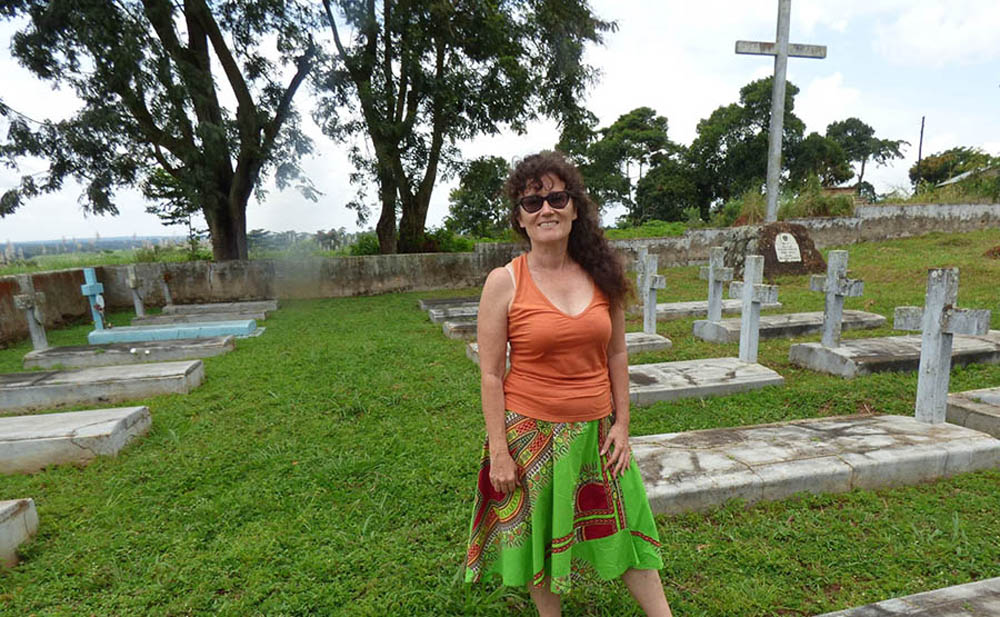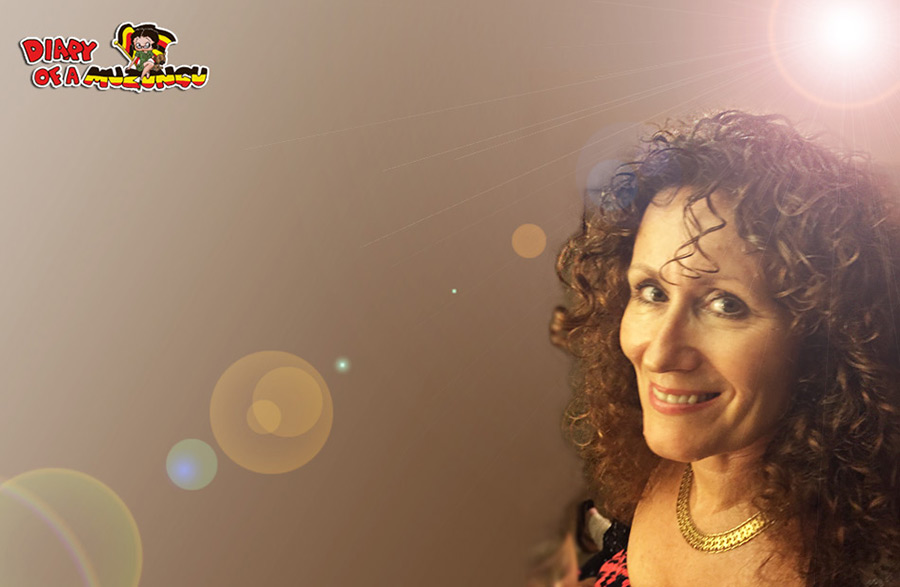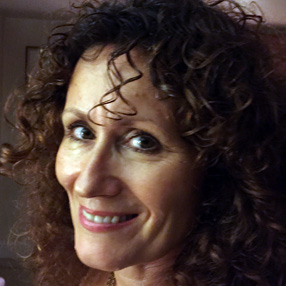
Discovering the unusual history behind the Polish Catholic Church at Nyabyeya near Masindi, western Uganda
Uganda consistently ranks highly as a country that cares for and welcomes refugees. This is not a new phenomenon, as a story from the 1940s reveals.

Visitors to Masindi are frequently amazed to learn that the area was once home to a community of Poles who built a church that remains popular with the community to this day. 45 minutes’ drive from Masindi, adjacent to Nyabyeya Forestry College, is Uganda’s only Polish church. If this is unusual, consider also the fact that it was built by refugees, mostly women, who fled Europe during the Second World War. The Polish Church at Nyabyeya is an anomaly, both architecturally and culturally but this unusual story has many positive elements, of sanctuary and childhood rediscovered.
Read their story and scroll down to view my photos of the church as it is today.
Why did Polish refugees come to Uganda?
In the early 1940s, more than 2,000 Polish women, children and elderly men arrived in western Uganda. They were some of over 18,000 Poles in 22 settlements in British colonies across Africa.

This group of Poles had been held in Siberian prisoner of war camps until 1941 when an amnesty allowed them to be freed. Polish men of fighting age joined General Anders’ army. With war raging across Europe, those who couldn’t join the army were offered shelter in one of Britain’s overseas territories. Over 110,000 people – the army and civilians – made their way from the Steppes of Russia to Iraq, Iran, Palestine and India. The Poles destined for Uganda were carried by boat to Mombasa and by rail across Kenya. Polish refugees arrived in Namasagali Port on the River Nile and were ferried onto Lake Kyoga by East African Harbors and Railways water transport up to Masindi Port. From here they boarded vehicles to their new homes (or settlements) near Masindi.
It’s hard to imagine what trials this community went through on their months and years of travel.

The book “From the Steppes to the Savannah” by Barbara Porajska recounts the story of their journey, mostly on foot, from the Russian Steppes and across the Indian Ocean to Mombasa and on to Masindi.
Who built the Polish Church near Masindi?
The Polish Catholic Church at Nyabyeya was built almost entirely by the women who had left their husbands and other male relatives in Europe, fighting in World War Two.
The church was built between 1943-1945, at the foot of Mount Wanda. Above the church entrance is the Polish coat of arms with the inscription Poloniae semper Fidelis. On the exterior is another inscription (in Polish, English, Latin and Kinyoro) saying: “This church is dedicated to the Blessed Virgin Mary, Queen of the Polish Crown, built by Polish exiles while wandering to the free Fatherland.” The (original) pews are hard carved, as is the towering figure of Jesus, carved from a single tree trunk. Above the altar hangs the icon of Our Lady of Częstochowa. On the church walls are the Stations of the Way of the Cross, with inscriptions in Polish. The church floor is made of hand-made hexagonal bricks. To visit the church, you will need to book in advance as the church receives few visitors and is often locked. (Scroll down for more details).
What was life like in the Polish settlements near Masindi?

“For children, Africa was a paradise” compared to the hell of Siberia from where they had come. According to the Association of Saint Michael the Archangel:
“The Poles travelled by ship from India to the port of Mombasa in Kenya. Later, they travelled inland to Lake Albert in Uganda, where “a piece of jungle was grubbed up for them, and clay houses covered with ivory grass were gradually built. The floor in the houses was made of clay, instead of windows – wooden shutters, and the light was an oil lamp. The furniture of the houses was also primitive – a bunk with a mosquito net, a table and two benches. Each house was divided into three rooms, for each family there was one room. They cooked in a wood-burning kitchen that was outside the house. There was also an ‘outhouse’ next to it.
The villages were built in the shape of a cross or in the shape of the letter H. In the middle was a well, and four sandy roads spread to the four sides of the world. There was a tap at the mouth of each one, from where people got water. They had lunch every day. Although the rations were not large, no-one was hungry. There were gardens around the houses; there was a lot of fruit around, and despite the ban, they hunted in the jungle for wild pigs from which they made sausages. Resourceful housewives supposedly even made ‘sauerkraut’ by shredding immature pineapples.” (Translation from the Polish by Google Translate).
“In Polish settlements, there were common, secondary, vocational and musical schools, and despite the problems with textbooks, some even seemed to graduate there. Because there were no teachers, the older high school graduates began to teach in public schools after completing the pedagogical course. The estate also had a hospital, two shops, a common room and a library, a bakery, a sewing room, a brickyard, a joiner’s workshop and a shoemaker. There was also a scout team, a theatre group, orchestra and choir. After suffering in Siberia, the Poles wanted the next place of exile to resemble a lost homeland. A part of the village was also an orphanage for children whose loved ones were tortured in Russia, did not manage to cope with the hardships of the road or enlisted in the army.”

Stanisław Lula, who arrived in Uganda when he was 16 years old, recalls: “Masindi estate is a large village built especially for the reception of Polish refugees … It was established in 1942 and consisted of 8 villages connected with each other. Our village was called ‘Monkey Grove’, because it bordered with bush, where there were a lot of different monkeys.”
The traditional king Omukama Sir Tito Gafabua Winyi IV of Bunyoro paid occasional visits to the camp.
The Polish Church served Poles living here until the closing of the camp in 1948. Many died of tropical diseases. Of the survivors, few made it to Poland. The Polish Church’s cemetery has 51 graves, 44 of which are Polish. An inscription – also in Polish – reads ‘Pray for the Poles who died 1939 – 1947.’
In 2010 the cemetery was renovated by students from the Pedagogical University of Kraków in Poland.
What happened to the Polish community in Uganda and the church after World War II?
World War II ended in 1945. In 1948, the British started to close down the camps. Of 18,000 Poles who reached East Africa from Siberia, only 3,000 returned to Poland. The others left for other countries.
The Polish Catholic Church at Nyabyeya remains a lively church. As the Forestry College 1 km away many of the Poles’ original houses still stand. Everyone is welcome to the Sunday services.
Visitors who are interested in learning about the Polish community’s impact may enjoy hearing that tin containers in local shops were referred to as Polands. If you wanted a portion of beans from the shop, you would ask for a ‘Poland of beans’ (rather than a cup of beans). These were named after the tins that the Polish had, presumably from the days of war rationing. I was interested to learn what this Polish community had left behind in terms of influence? These were not European colonisers. (How did they get on with local people?)
There was a second Polish settlement in Uganda, at Koja in eastern Uganda. This camp was bigger but razed to the ground after the Poles left. Masindi is therefore the main base in Uganda for Poles wishing to retrace their ancestors.
Why visit the Polish Church?
- Discover WWII history and its impact on East Africa
- A destination for Poles wishing to learn about their ancestors
- An active connection with Poland
- A place to admire Polish Catholic art and iconography
- An active church
How to find Masindi’s Polish Church
The church is 45 minutes’ drive from Masindi and just five minutes from the Royal Mile, Budongo Forest. It’s not signposted and the route takes you along winding dusty tracks (but you may just find it using Google Maps). My visit was organised by Sallie and Robert from New Court View Hotel in Masindi, where I stayed for five nights. They will make sure someone is there to open the church and give you a tour.
If you visit the Polish Church, do read the visitors’ book. Many comments are from descendants of the Poles who once lived here.
Further reading
- How East Africa became home for Polish exiles
- “Africa was the closest to Poland.” The rescued exiles from Siberia were sent to the Black Continent
- Photographs courtesy of Kresy-Siberia Foundation and blog post about Polish refugees in Uganda.



























This article is a stark reminder of what the Poles had escaped.
‘I seek a kind person’: the Guardian ad that saved my Jewish father from the Nazis. 6 May 2021
https://www.theguardian.com/media/2021/may/06/guardian-200-ad-that-saved-jewish-father-from-nazis/
“WILL a Philanthropist take a much-gifted Girl, 14 years old. daughter of an Austrian Jewish lawyer, as foster-child ? Kindly write to Dr. Karl Longer, 14 Praterstrasse. Vienna 2.”
“In 1938, Jewish families under Nazi rule were scrambling to get their children out of the Reich. Newspaper advertisements were one avenue of escape. Scores of children were “advertised” in the pages of the Manchester Guardian, their virtues and skills extolled in brief, to fit the space.”
I’m excited to learn that Uganda hosted Polish refugees during WW II. I don’t know why I didn’t learn about this in Church history. When I visit Uganda (home), I’ll visit Nyabyeya too. God bless Poland. God bless Uganda.
This story has really picked Ugandans’ interest. You would think it would be talked about in history classes at school?
Thanks for dropping by Diary of a Muzungu. Enjoy your trip to Nyabyeya!
Thank you for all the comments on the Diary of a Muzungu Facebook page. One Facebook Fan shared this story from 2019.
“When the Polish were refugees in Africa
Thousands of Europeans sought sanctuary in Africa during World War II — among them were many Polish people. A Canadian filmmaker explores the journey of his Polish forefathers in a documentary.”
The resulting film, “Memory is our Homeland,” won the Audience Award at the Montreal International Film Festival in 2019.
This is one moving story. Weird that it’s not in the history classes we covered in the country.
Absolutely – and I am amazed at how few people seem to have heard of it. I encourage you to visit. The story is extraordinary, from start to finish.
Hallo muzungu;
I lived there (in the part of the Settlement to the left of the road northwards from the Church) between 1942-48 as a boy.Beautiful country of very friendly people.those years are great pleasure.to recall,many happy hours were spent playing in the stream that began in the forest beyond the arable field and grass at the Settlement’s north edge.
Dear Zbigniew
How wonderful to read from you! You must have so many interesting stories to share. Have you revisited since the 1940s?
I shared this story on my Facebook page where there were lots of questions from Ugandans. They wanted to know whether any Poles had stayed in Nyabyeya. They also asked whether the Polish community had married Ugandans and whether they had children?
We would love to read more
Thanks for your message.
Dear Muzungu,
Apologies for late reply (illness).I don’t remember marriages or stayers for practically all were disrupted families desperate to regain contact. Remember Uganda was governed by very different people then and staying was extremely difficult.
It’s interesting to be reminded of how different the world was in the 1940s… and of course, people would have wanted to be reunited with their families.
Thanks for your message – (and hope you are feeling better!)
Thanks for exploring this line of Uganda’s history. Pick interest in details of why these camps were secluded and far from population centres. You could as well interest yourself in learning about other European refugees around the same time like the italians at Jinja and Entebbe, and the refugees that included Germans, Austrians, Romanians, Yugoslavs, Bulgarians, Hungarians and Stateless Jews camped at Arapai near Soroti. We also hosted French refugees at Bombo. There is need to dig more about the fate of those who were too old or had criminal records and could not be resettled after the war. Also interest should be sought on whether there were any intermarriages with locals. Otherwise thanks a bunch for this blog.
Hi Stephen, thanks for dropping by. I really appreciate your comment and will definitely take time to research these other European refugee communities in Uganda.
The intermarriage with locals is an interesting one. When I posted this story on my Facebook page, lots of people asked whether there were mixed race Polish Ugandan families in Masindi. I haven’t heard of any but perhaps they are there? If you have any recommended reading, I would love to know more.
The Facebook comments are very interesting.